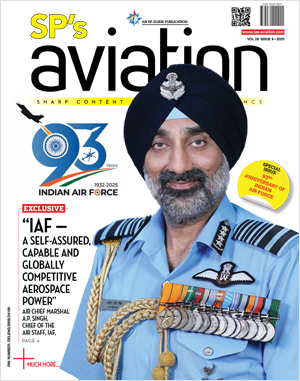INDIAN ARMED FORCES CHIEFS ON OUR RELENTLESS AND FOCUSED PUBLISHING EFFORTS
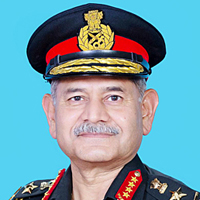
The insightful articles, inspiring narrations and analytical perspectives presented by the Editorial Team, establish an alluring connect with the reader. My compliments and best wishes to SP Guide Publications.

"Over the past 60 years, the growth of SP Guide Publications has mirrored the rising stature of Indian Navy. Its well-researched and informative magazines on Defence and Aerospace sector have served to shape an educated opinion of our military personnel, policy makers and the public alike. I wish SP's Publication team continued success, fair winds and following seas in all future endeavour!"

Since, its inception in 1964, SP Guide Publications has consistently demonstrated commitment to high-quality journalism in the aerospace and defence sectors, earning a well-deserved reputation as Asia's largest media house in this domain. I wish SP Guide Publications continued success in its pursuit of excellence.
- A leap in Indian aviation: Prime Minister Modi inaugurates Safran's Global MRO Hub in Hyderabad, Calls It a Milestone
- All about HAMMER Smart Precision Guided Weapon in India — “BEL-Safran Collaboration”
- India, Germany deepen defence ties as High Defence Committee charts ambitious plan
- True strategic autonomy will come only when our code is as indigenous as our hardware: Rajnath Singh
- EXCLUSIVE: Manish Kumar Jha speaks with Air Marshal Ashutosh Dixit, Chief of Integrated Defence Staff (CISC) at Headquarters, Integrated Defence Staff (IDS)
- Experts Speak: G20 Summit: A Sign of Global Fracture
IAF – Target ‘42 Squadrons’
While the IAF’s roadmap through Tejas Mk-1A / Mk-2, MRFA, and AMCA is conceptually sound, blending indigenous development with foreign procurement to manage risk and speed, the implementation may drag beyond the timeline. What is to be done?
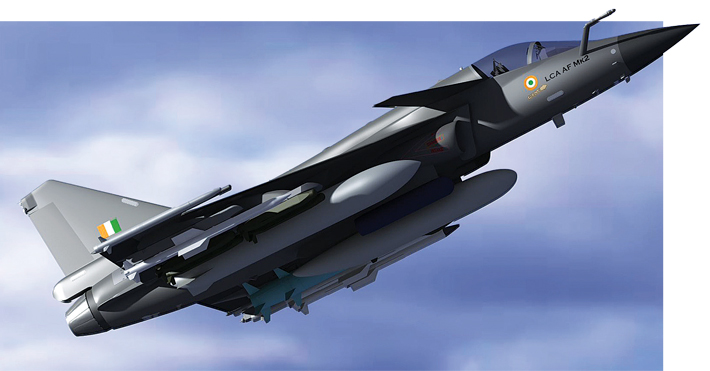
The question of the Indian Air Force (IAF)’s fighter strength is wildly debated for the reason which is very obvious, even as we all begin to talk of unmanned systems in the skies taking wings and shapes. One of the key elements is the sanctity of the planning, capability roadmap, which puts the fighters at the core of its war fighting strategy. That works for all advanced militaries, including India, on the horizon, without exception.
The authorised combat squadron strength of the IAF has long been pegged at 42 squadrons to credibly meet two-front war requirements (Pakistan in the west, China in the north & northeast). While this is an estimate based on the prevalent situations, the need of the hour is to deliberate on a strength of greater than 42.
Currently, the IAF’s active strength is estimated at around 30–31 squadrons, depending on how “combat capable/fully operational” is defined. Now, after decommissioning of IAF’s workhorse—the MiG-21, it will stand at 29, totalling 464-522 fighters. This is about 250 short of the requirements of 42 squadrons.
Moreover, the IAF and the Ministry of Defence (MoD) have recognised that simply reaching 42 may not be sufficient in the long term. Some sources suggest that, in light of adversaries’ modernisation and force multipliers (drones, missiles, 5th-Gen/stealth, space & cyber backup), a higher number may be required. For comparison sake, China’s People’s Liberation Army Air Force (PLAAF) operates more than 2,000 fighter aircraft, while Pakistan Air Force has approximately 500 fighter aircraft.
Thus, the roadmap involves both retiring old platforms and inducting a mix of indigenous and Foreign/Make-in-India fighters to ramp up strength over time. So, what is the roadmap for such a complex mix of fighters and their multiple programmes for multiple roles in the IAF?
RECENT APPROVALS & HIGH-LEVEL COMMITTEES
The Cabinet Committee on Security (CCS) approved the Advanced Medium Combat Aircraft (AMCA) project in March 2024, sanctioning full-scale engineering design & development of five prototypes plus a structural test specimen. As of now, the timeline looks like - Design work concluded in 2023, five prototypes are planned, with rollout starting in late 2026 to early 2027. The first flight is expected by 2028–29, certification by 2032, and IAF induction by 2034–35.
The IAF is at a pivotal point as the gap between authorised vs actual squadrons is hurting preparedness, especially as strategic threats in India’s neighbourhood grow
A Memorandum of Understanding (MoU) between GE and HAL to co-produce or license produce GE F414 engines has been signed; this is relevant for Mk-2 and AMCA. At the same time, MoD’s AMCA execution model, cleared in May 2025, has shifted from a HAL-led SPV to a public-private partnership (PPP). The roadmap for AMCA will have Indian private entities-individually or in joint ventures, to lead development and production.
Parliamentary Standing Committee on Defence has repeatedly drawn attention to the decline in squadron strength and urged faster augmentation via Tejas, MRFA, etc.
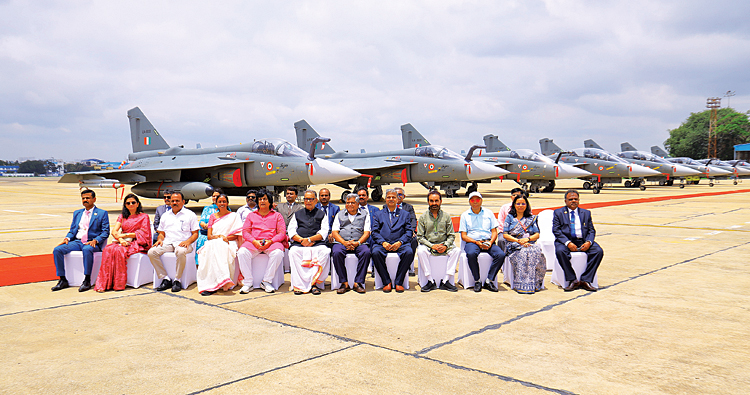
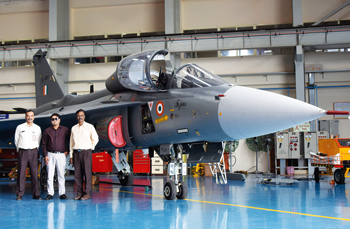
ENGINE ISSUES AND PRODUCTION BOTTLENECKS
The discussion on fighters now hinges rather more on Engine supply delays, as these are among the most critical technical and industrial risks in the roadmap. Moreover, the fighter programme and engine developments are linked to the extent that it has reverberated in the larger canvas of geopolitics and bilateral ties.
The F404-IN20 (for LCA Tejas Mk-1A) deliveries from GE have been delayed, affecting HAL’s ability to produce the Mk-1A on the planned schedule. HAL has been trying to utilise reserve engines or those from earlier variants to build structures and carry out test and integration tasks.
Another key issue is the engine standardisation/dependency: For future projects (LCA Tejas Mk-2, AMCA), dependence on GE engines (F414) continues to raise strategic risk. Indigenisation/technology transfer is planned, but it will take time.
Not to sidestep the production capacity at HAL, which is ramped up but yet to gear up, among other issues, including the major one as mentioned earlier. HAL must ramp up manufacturing lines (structure, avionics integration, assembly) to meet the increasing load: delivering 83 Mk-1A, then 97 more, Mk-2, AMCA, plus supporting maintenance, upgrades for existing fleets. Delays in components, supply chain disruptions, and skilled workforce constraints are non-trivial.
Even as planes’ structures are built, certification of avionics, radar, weapons, and EW systems under operational conditions takes time. Weapon trial delays can hold up operational induction. HAL has stated that deliveries of the first two Mk1A may be contingent on completing weapon trials.
NEW PERSPECTIVE: LONG-TERM PLANS
Putting together the pieces, here is how the IAF / MoD appear to be structuring their force development in the next 10-20 years: It’s about the short/medium-term (next 5 years or so) roadmap.
Firstly, as per the well-talked-about plan, IAF aims to receive the complete delivery of LCA Tejas Mk-1A orders (83 + 97) to shore up numbers and replace retiring older aircraft (MiG-21, MiG-27, Jaguar, etc).
Simultaneously, accelerate the MRFA programme. While the MRFA is again laid out on the premises of ‘make in India’, which it must, without any faltering, the initial acquisition of foreign/off-the-shelf fighters can fill the gaps. Again, while indigenous MRFA programmes begin to take shape, phased induction is expected.
Increase HAL’s production capacity (structure, assembly, test facilities) and remedy supply chain and engine import challenges. Tighten timelines, minimise cost and delay.
NEXT IS MEDIUM TO LONG TERM (BEYOND 5-TO 10 YEARS).
This is built upon the Induction of LCA Tejas Mk-2 (once its development and testing are complete) in numbers to enhance payload/range capabilities.
The induction of AMCA - As per the reports, the prototypes will fly by 2026-27, but operational squadrons likely in the 2030s. The stealth fighter is essential for deep penetration, strategic tasks.
BEYOND THE CURRENT AUTHORISED STRENGTH
Considering the projected retirement of older squadrons and the pace of induction, IAF may need to aim for more than 42 squadrons to maintain a margin, especially if conflict scenarios stretch across two or more fronts. Some sources suggest that once the schedule of inductions and retirements is even, 50 squadrons or more might be the target.
The IAF is at a pivotal point as the gap between authorised vs actual squadrons is hurting preparedness, especially as strategic threats in India’s neighbourhood grow.
While the roadmap through LCA Tejas Mk-1A / Mk-2, MRFA, and AMCA is conceptually sound, blending indigenous development with foreign procurement to manage risk and speed, the implementation may drag beyond the timeline.
Here, the execution challenge is real in terms of engine supply, production bottlenecks, certification, and industrial readiness must be addressed urgently. Delays not only delay force levels but also drive operational vulnerabilities.
Realising 42 squadrons is necessary but possibly not a sufficient condition; the IAF should build in a buffer beyond 42, especially for high-intensity / multi-front conflict scenarios.
The most important aspect is the continuous oversight (from CCS, defence-procurement committees, standing committees of Parliament), transparency in schedule adherence, and capability build-up of the domestic aero-industry (both public and private) will be decisive.
KEY ACQUISITION & INDIGENOUS DEVELOPMENT PROGRAMMES
Here are the Major Pillars of IAF’s Future Force Structure:
| Programme | Role & Timeline | Approximate Squadrons Planned / Units | Status & Key Issues |
|---|---|---|---|
| Tejas Mk-1 / Mk-1A | Light Combat Aircraft (LCA) Mk-1 is current; Mk-1A is an upgraded variant: better avionics, radar, weapons, and maintainability. Intended to fill in the medium-term gap as older aircraft retire. | Initial order of 83 Mk-1A (2021) plus a follow-on order of 97 more in recent signature, totalling 180 units of Mk-1 / Mk-1A. | Delays: Engine supply (GE F404-IN20) has been a major bottleneck. Production capacity (HAL) has to be ramped; Mk-1A deliveries originally scheduled to begin earlier (2024), but first deliveries are now expected in end 2025. |
| Tejas Mk-2 | More capable version; greater payload, range, more powerful engine (GE F414). Serves as a bridge between Mk-1 / Mk-1A and AMCA. | IAF plans to induct several squadrons of Mk-2 (numbers vary) as Mk-1A orders are completed. | Development is underway; engine supply, certification, and weapon integration will be key challenges. HAL & DRDO need to maintain timelines. |
| MRFA (Multi-Role Fighter Aircraft) | Foreign/off-the-shelf / Make in India aircraft to augment the fleet in the short to medium term to make up for the capability/quantity gap. RFI / tendering to acquire ~114 aircraft. | 114 aircraft is the MoD / IAF’s target. These will help prevent the squadron strength from dipping too low as older aircraft retire. | Progress has been slow. RFI was issued, and multiple contenders responded. But formal RFP / contract finalisation has been delayed, in part due to shifting priorities, emphasis on indigenous programmes, and engine / industrial base constraints. |
| AMCA (Advanced Medium Combat Aircraft) | A fifth-generation stealth-capable twin-engine aircraft, with internal weapons bays, stealth features, conformal antenna, etc. Two phases: Mk-1 (with off-the-shelf/licensed engine such as GE F414) and later Mk-2 with a more powerful/indigenous engine. | The plan is for multiple squadrons (often cited as ~7 squadrons) over a long horizon (post-2030s) once prototypes, testing, and production ramp up. | Approved by the Cabinet Committee on Security (CCS) in March 2024. Challenges: engine availability, stealth material supply, and industrial / test infrastructure for 5GEN aircraft. Also, timelines are long (prototype rollout ~2026, first flight after that). Full squadron induction expected well after the prototype/testing phases. |
Chart compiled by Manish Kumar Jha
Manish Kumar Jha is a Consulting & Contributing Editor for SP’s Aviation, SP’s Land Forces and SP’s Naval Forces and a security expert. He writes on national security, military technology, strategic affairs & policies.





